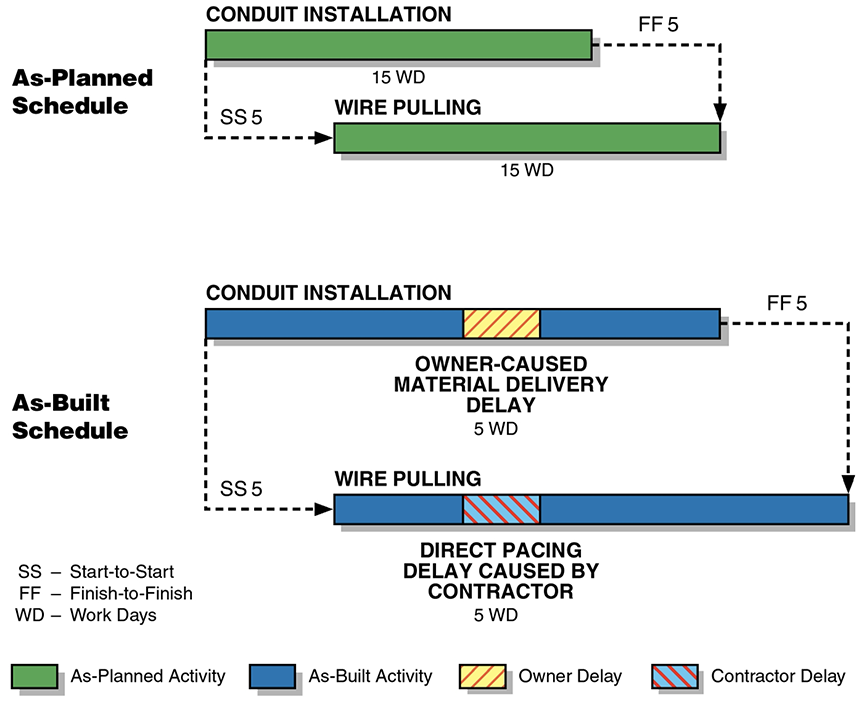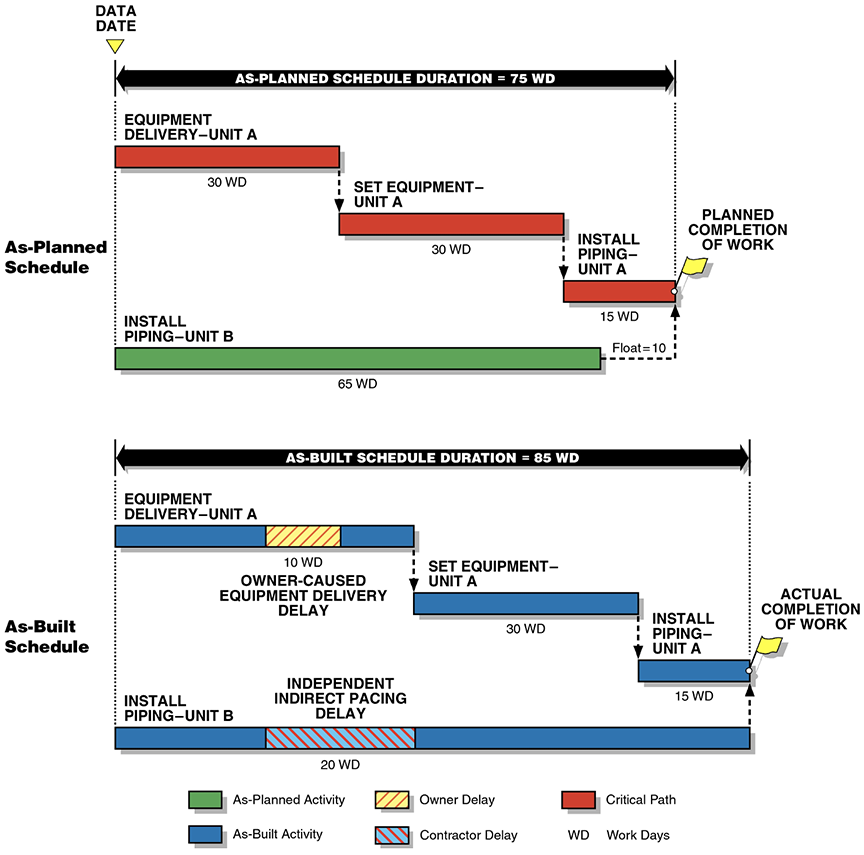
March 27, 2023
Direct and Indirect Contractor Pacing
This is the first post in a two-part series that discusses considerations for justifying contractor pacing arguments. The series defines contractor pacing, direct and indirect pacing, and elements needed to justify contractor pacing arguments when trying to prove excusable and/or compensable delay.
Contractor Pacing Defined
Based on implied warranty, a contractor is allowed to enjoy a least-cost job performance when executing a construction project, efficiently optimizing its assigned resources in terms of labor and equipment and mitigating potential added costs from delays caused by others. Contractor pacing is a delay generally defined by the following:
Deceleration of the project work, by one of the parties to the contract, due to a delay to the end date of the project caused by the other party, so as to maintain steady progress with the revised overall project schedule.1
Contractor pacing is a conscious decision by a contractor to slow down parallel work activities in reaction to a concurrent, owner-caused impact to the overall critical path. Pacing is classified as either direct or indirect pacing.
Direct Pacing
Direct pacing occurs when “the paced event has a logical relationship to the parent delay.”2 Simply put, if the driving predecessor activity is delayed, then it is likely that the successor activity will be delayed. Figure 1 below illustrates direct pacing, showing the predecessor-to-successor relationship.
Figure 1: Direct Pacing

The as-built schedule shows an owner-caused conduit material delay of five workdays, which delayed the finish of the conduit installation. Because finishing the successor wire-pulling activity depended on the finish of the predecessor conduit installation activity, the wire pulling was also delayed. As a direct response to the owner-caused predecessor activity delay, the contractor consciously chose to slow down its wire-pulling work and keep pace with its driving predecessor conduit installation activity. The reasoning underlying direct pacing is logical, and an owner is more likely to understand and accept a contractor’s direct pacing argument, along with accompanying contemporaneous contractor notice of pacing and support documentation, than an indirect pacing argument.
Indirect Pacing
Indirect pacing occurs when the paced activity has no direct or logical reliance on the activity that has an owner-caused delay.3 Figure 2 shows an example of this.
Figure 2: Indirect Pacing

In Figure 2, the as-planned schedule has two parallel paths. The driving critical path goes through Unit A equipment installation work, and the driving near-critical path goes through Unit B piping installation with 10 workdays of available float. The as-built schedule shows an owner-caused equipment delivery delay that delayed the overall finish by 10 workdays. The as-built schedule also shows an indirect pacing delay of 20 workdays to the Unit B piping work. This delay was not directly related to the owner-caused delay.
The contractor’s rationale for its pacing delay was that the owner-caused delay to the critical path created available overall float of 10 workdays. Hence, the contractor had 20 workdays of available float (10 days caused by the owner delay and 10 days of original float in piping installation) to pace its Unit B piping work and mitigate its costs. In contrast to direct pacing, indirect pacing arguments lack clear linkage to the owner-caused delay. As a result, indirect pacing arguments are controversial, and owners frequently dismiss them without notice of pacing and contemporaneous, documented proof.
1 AACE® International Recommended Practice 10S-90, “Cost Engineering Terminology,” 23 August 2022, p. 44 of 134.
2 AACE® International Recommended Practice 10S-90, p. 46 of 134.
3 AACE® International Recommended Practice 10S-90, p. 64 of 134.
ADDITIONAL RESOURCES

Blog
Discover industry insights on construction disputes and claims, project management, risk analysis, and more.
MORE

Articles
Articles by our engineering and construction claims experts cover topics ranging from acceleration to why claims occur.
MORE

Publications
We are committed to sharing industry knowledge through publication of our books and presentations.
MORE
RECOMMENDED READS
Analysis of Concurrent and Pacing Delays
This article analyzes pacing relative to owner-caused delays and explains how to demonstrate that pacing is not a concurrent contractor-caused delay.
READ
Analysis of Concurrent Delay on Construction Claims
This article addresses treatment of concurrent delay in various legal jurisdictions, allocation of delay responsibility when concurrent delay occurs, and more.
READ
Types of Delay
Delays in construction contracts are usually categorized as one of three types. This blog post defines each type, with examples.
READ
